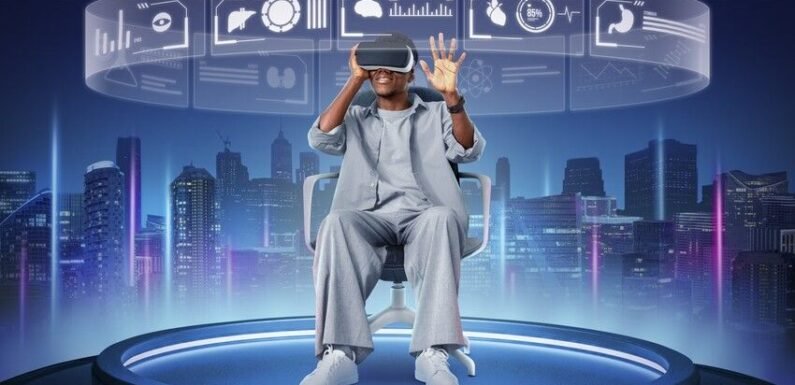
The digital world is growing fast. Technology changes every day. One of the biggest changes is virtual reality. Now, a new version has come—virtual reality 2.0. It is smarter, faster, and more real. This new tech is transforming how we live, work, and play.
What Is Virtual Reality 2.0?
Virtual reality 2.0 is the next stage of VR. It uses better hardware and smarter software. It offers more real and smooth experiences. Users feel like they are really inside the digital world. The graphics are sharper, and the controls are more natural. This version is not just for fun. It helps people at work with their health, learning, and more.
1. Changing the Way We Work
Virtual reality 2.0 is enhancing remote work. You no longer need to sit in video calls. Now, you can sit in virtual rooms. You can meet coworkers in 3D space. It feels like they are right next to you. Big companies use it for training too. It helps workers learn safely and quickly. They can practice tasks without real-world risks.
2. Helping the Healthcare Industry
Doctors are using virtual reality 2.0 in surgeries. It helps them see the body in 3D. They can plan the surgery better. VR is also used to teach medical students. They can learn inside a digital human body. No need for real cadavers. Some patients use it for pain relief or mental health. It helps with anxiety, fear, and even PTSD.
3. Changing the Gaming World
Gaming is where virtual reality first became popular. Now, virtual reality 2.0 is taking it to new heights. The games are more real. The movements are smoother. The players feel like they are inside the game world. Multiplayer VR games now offer shared 3D worlds. Friends from different cities can play and explore together.
4. Improving Online Shopping
Virtual reality 2.0 is changing how people shop. You can walk inside virtual stores. You can check clothes or furniture in 3D. You can even try things before buying. For example, see how a sofa looks in your room. Or try on glasses using your 3D face. This makes online shopping more fun and more useful.
5. A New Way to Learn
Schools and colleges are using virtual reality 2.0. It brings books to life. Students can visit ancient cities or explore the solar system. They can do science experiments in safe virtual labs. Learning becomes more fun and easier to understand. It helps students remember things better.
6. Boosting Tourism and Travel
Can’t travel in real life? No problem. Virtual reality 2.0 lets you visit any place on Earth. You can walk around the Eiffel Tower or see the pyramids of Egypt. All from your home. It also helps tourists plan trips. You can explore hotels, rooms, and tourist spots before booking.
7. Making Social Media More Real
Social apps are changing with virtual reality 2.0. Now, you can meet friends in virtual worlds. You can chat, play, or attend events together. You feel like you’re with them, even from far away. Virtual parties, concerts, and meetups are growing popular.
8. Helping People With Disabilities
Virtual reality 2.0 can help people with mobility issues. They can explore places they can’t visit in real life. They can attend school, meet people, and enjoy games in the virtual world. It opens up many new chances and freedoms.
9. Used in Military and Police Training
Military and police forces use VR for practice. It helps them train in real-like situations. They can practice fighting, rescue, or crowd control without real danger. It saves money and keeps them safe during training.
10. Revolutionizing Architecture and Design
Architects use virtual reality 2.0 to show building plans in 3D. Clients can walk through the virtual building before it is made. They can suggest changes early. Interior designers also use it to show room designs. It saves time and avoids costly changes.
Why Virtual Reality 2.0 Matters Now
The world is moving online fast. People want more real and engaging digital experiences. Virtual reality 2.0 gives just that. It removes limits. It connects people better. From games to education, it is changing how we see and use the internet.
Challenges Ahead
There are still some problems. VR headsets are costly for many people. Some users feel dizzy or sick after long use. Internet speed must be fast and stable for the best experience. Privacy and data safety also need attention.
The Future of Virtual Reality 2.0
Experts believe virtual reality 2.0 will become normal in daily life. New jobs will be created in the VR field. Schools may have full VR classes. Offices may use only virtual meetings. Soon, every home may have a VR headset, just like a smartphone.
Conclusion
Virtual reality 2.0 is not science fiction. It is here. And it is changing our world fast. From work to play, from shopping to learning—it is making everything more real and more personal. As it grows, it will bring more chances and change more lives. Virtual reality 2.0 is the future of the digital world. And the future has already begun.
Tech World Times (TWT), a global collective focusing on the latest tech news and trends in blockchain, Fintech, Development & Testing, AI and Startups. If you are looking for the guest post then contact at techworldtimes@gmail.com

